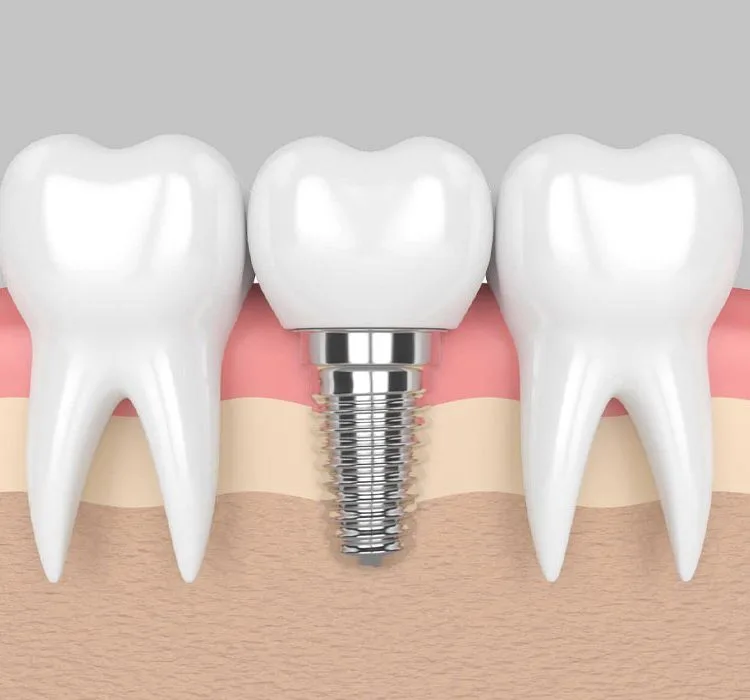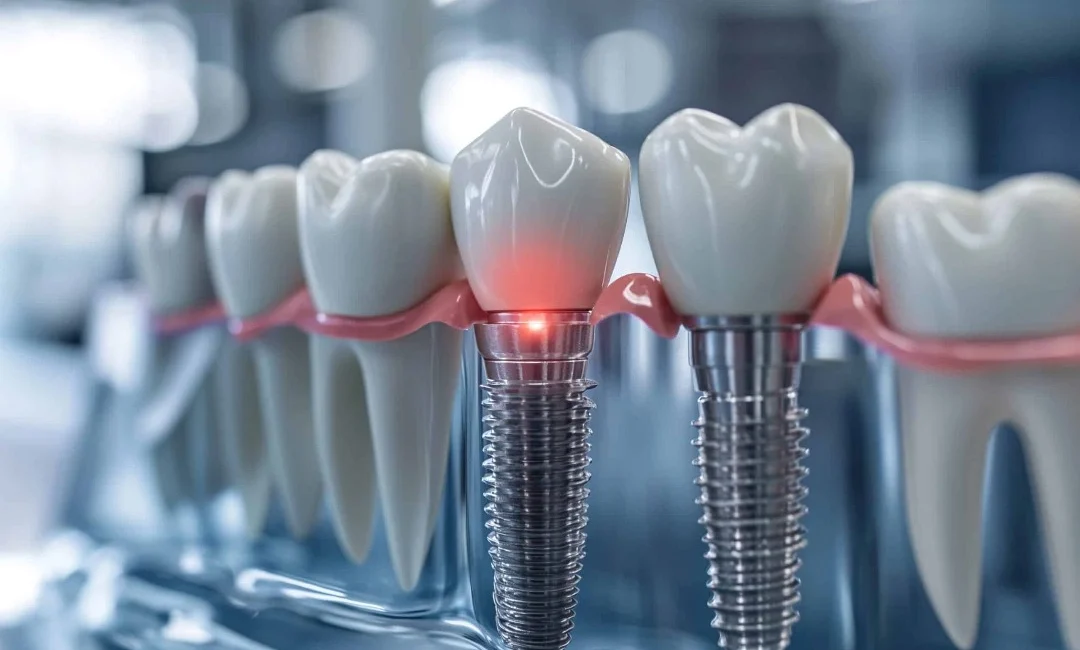Introduction to Dental Implants
A dental implant is a revolutionary solution for individuals seeking to replace missing teeth with a durable, natural-looking alternative. Unlike traditional dentures or bridges, dental implants are designed to mimic the function and appearance of natural teeth. As a staple in modern dentistry, dental implants offer unparalleled benefits in restoring oral health and enhancing aesthetics.
The history of dental implants dates back thousands of years, with rudimentary versions discovered in ancient civilizations. Modern dental implants, however, have evolved significantly since their inception in the 20th century, thanks to advancements in materials and surgical techniques. Today, they are a preferred choice for millions worldwide.
Dental implants not only address the aesthetic concerns associated with missing teeth but also play a crucial role in preserving jawbone integrity and improving overall oral function. This comprehensive guide will explore every aspect of dental implants, from their benefits and types to the procedure and aftercare, ensuring you have all the information needed to make an informed decision.
Benefits of Dental Implants
Dental implants are more than just a cosmetic solution; they offer a host of functional and health benefits that set them apart from other tooth replacement options. Here are the key advantages:
1. Improved Oral Health
Dental implants help prevent the bone loss that typically occurs after tooth extraction. Unlike dentures, which rest on the gums, a dental implant integrates with the jawbone, stimulating it and maintaining its density. This preservation of bone structure is crucial for maintaining the overall shape and appearance of your face, reducing the risk of a sunken look that often accompanies tooth loss.
Furthermore, dental implants reduce the risk of shifting teeth, which can lead to bite misalignment and further oral health issues. By filling the gap left by a missing tooth, implants help maintain the natural alignment of your teeth.
2. Longevity and Durability
With proper care, dental implants can last a lifetime. Made from robust materials like titanium and zirconia, they are resistant to decay and wear. This durability makes dental implants a one-time investment that continues to deliver benefits for decades, unlike other solutions that may require frequent replacement.
Compared to traditional bridges, which often need replacement every 7–10 years, and dentures that may require adjustments and relines, dental implants stand out as a cost-effective and sustainable option in the long run.
3. Natural Appearance
One of the standout features of dental implants is their ability to replicate the look and feel of natural teeth. Custom-made crowns ensure a seamless blend with your existing teeth, enhancing your smile’s aesthetics. The precise design and color matching make it nearly impossible to distinguish a dental implant from a natural tooth.
Advanced imaging technology and 3D printing techniques further enhance the customization process, ensuring that every detail, from shape to texture, matches your natural teeth perfectly. This attention to detail contributes to a confident and radiant smile.
4. Enhanced Comfort and Functionality
Unlike removable dentures, dental implants are fixed in place, providing superior comfort and stability. They enable you to eat, speak, and smile with confidence, without worrying about slippage or discomfort. The strength of a dental implant allows you to enjoy a diverse range of foods, even those that might be challenging for traditional dentures.
Patients who previously struggled with loose-fitting dentures often report a significant improvement in their quality of life after transitioning to dental implants. The ability to bite and chew naturally also aids in better digestion and overall nutrition.

5. Low Maintenance
Maintaining a dental implant is straightforward and mirrors the care routine for natural teeth. Regular brushing, flossing, and dental check-ups are all that’s needed to keep them in top condition. With minimal additional effort, dental implants can remain functional and visually appealing for a lifetime.
Unlike dentures, which require nightly soaking and specific cleaning solutions, dental implants integrate seamlessly into your existing oral hygiene routine, making them a convenient option for busy lifestyles.
Types of Dental Implants
Understanding the different types of dental implants can help you choose the option that best suits your needs. Here are the primary categories:
1. Endosteal Implants
Endosteal implants are the most commonly used type. These implants are placed directly into the jawbone and act as artificial roots. Once the surrounding tissue heals, a crown is attached to the implant, completing the restoration. This type is suitable for most patients with sufficient bone density and provides a stable foundation for replacement teeth.
Endosteal implants come in various shapes, including screw-like and cylinder designs, allowing dentists to tailor the choice to individual anatomical needs. They are often used for single-tooth replacements but can also support bridges and dentures for larger restorations.
2. Subperiosteal Implants
Subperiosteal implants are placed under the gum but above the jawbone. They are typically used for patients who lack sufficient bone height or density for endosteal implants. A custom metal framework supports the implant, ensuring stability without the need for extensive bone grafting.
These implants are often recommended for patients who prefer a less invasive option or those unable to undergo bone augmentation procedures. Although less common than endosteal implants, they remain a viable solution for specific cases.
3. Mini Dental Implants
As the name suggests, mini dental implants are smaller in diameter than traditional implants. They are often used in cases where space or bone density is limited and are ideal for stabilizing lower dentures. Despite their smaller size, mini implants offer a reliable and less invasive alternative for tooth replacement.
Mini dental implants are also a quicker solution, as they require fewer surgical steps and typically involve a shorter healing period. They are particularly popular among patients seeking a cost-effective and minimally invasive option.
Dental Implant Procedure
The process of receiving a dental implant involves several stages, each designed to ensure optimal outcomes:
1. Initial Consultation
During this phase, your dentist will evaluate your oral health, take X-rays, and determine if you are a candidate for a dental implant. Factors such as bone density, gum health, and overall medical history will be considered. A thorough examination helps ensure the success of the procedure and minimizes potential risks.
Modern diagnostic tools, such as cone-beam computed tomography (CBCT) scans, provide detailed 3D images of your jaw, allowing for precise treatment planning. This technology ensures accurate placement and reduces the risk of complications.
2. Pre-Surgical Preparation
If you have insufficient bone density, a bone graft may be necessary to create a stable foundation for the implant. This preparation phase is crucial for the long-term success of the dental implant. Bone grafting involves transplanting bone tissue to the jaw, which may require a healing period before the implant can be placed.
In some cases, advanced techniques like sinus lifts or ridge augmentation may be performed to enhance bone structure. These procedures expand the possibilities for patients who might otherwise be ineligible for dental implants.
3. Implant Placement Surgery
In this stage, the dentist places the dental implant into the jawbone. The procedure is typically performed under local anesthesia, ensuring a painless experience. The healing process, known as osseointegration, can take several months. During this time, the implant fuses with the jawbone, creating a secure anchor for the replacement tooth.
For patients with multiple missing teeth, multiple implants may be placed simultaneously, depending on their overall oral health and bone condition. Advances in guided surgery techniques have further improved the accuracy and efficiency of implant placement.
4. Crown Attachment
Once the implant has fused with the jawbone, a custom-made crown is attached to the abutment, completing the restoration. The result is a functional and aesthetically pleasing replacement tooth. The crown is designed to match the size, shape, and color of your natural teeth for a harmonious appearance.
Temporary crowns may be used during the healing period to maintain aesthetics and functionality. Once the final crown is ready, it is securely attached, ensuring a durable and seamless restoration.

Who is a Candidate for Dental Implants?
Not everyone is an immediate candidate for dental implants. Several factors determine eligibility:
Factors Influencing Eligibility
- Sufficient Bone Density: A healthy jawbone is essential for supporting a dental implant.
- Gum Health: Healthy gums are necessary to ensure proper healing and support for the implant.
- Overall Health: Conditions such as uncontrolled diabetes or immune disorders may affect healing. Additionally, patients undergoing chemotherapy or radiation treatment may require special consideration.
Contraindications
Patients with active gum disease, heavy smoking habits, or certain medical conditions may need additional treatment or lifestyle changes before proceeding. Smoking, in particular, can significantly impact the healing process and the success of a dental implant.
Dentists often collaborate with other healthcare providers to address underlying conditions and optimize oral health before implant placement. This holistic approach increases the likelihood of a successful outcome.
Age Considerations
While dental implants are suitable for adults of all ages, they are not typically recommended for children or adolescents whose jawbones are still developing. In cases involving younger patients, alternative solutions may be explored until growth is complete.
Advanced growth assessment tools allow dentists to determine the right timing for implant placement, ensuring the best possible results for younger patients transitioning into adulthood.
Comparison: Dental Implants vs Other Options
Dental implants stand out as a superior choice compared to traditional tooth replacement options. Here’s why:
1. Bridges
While dental bridges can replace missing teeth effectively, they require altering adjacent teeth for support. In contrast, a dental implant is independent and preserves natural tooth structure. Bridges may also have a shorter lifespan and require replacement over time, whereas implants are more durable.
Additionally, bridges do not address underlying bone loss, which can lead to long-term oral health issues. Dental implants, on the other hand, stimulate the jawbone and help maintain its integrity.
2. Dentures
Dentures are removable and often less stable than dental implants. Implants provide a permanent solution with improved comfort and functionality. Dentures may also cause irritation to the gums over time, while implants integrate seamlessly with the jawbone.
Implant-supported dentures combine the best of both worlds, offering the stability of implants with the affordability of traditional dentures. This hybrid solution is gaining popularity among patients seeking enhanced comfort and convenience.
Cost and Effectiveness Comparison
Although dental implants may have a higher initial cost, their durability and low maintenance requirements make them a cost-effective choice in the long run. Investing in dental implants ensures long-term satisfaction, both in terms of functionality and aesthetics.
Insurance coverage for dental implants varies, but many providers now offer partial reimbursement, recognizing the long-term benefits of this advanced treatment option.

